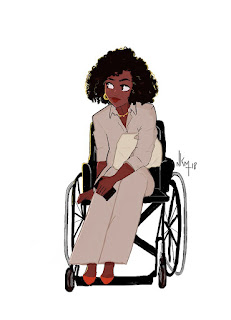GENDER AND LIVING WITH A DISABILITY
Disability is a condition or function judged to be significantly impaired relative to the usual standard of an individual of their group. The term is mostly used to refer to individual functioning, including physical impairment, sensory impairment, cognitive impairment, intellectual impairment, mental illness and various types of chronic disease. Disability is an umbrella term, covering impairment, activity, and limitation as well as participation restrictions. It is not just a health problem but a complex phenomenon, reflecting the interaction between features of a person’s body and features of the society in which a person lives. Most common conditions considered disabilities include; arthritis, heart disease, lung or respiratory problems, mental illness including depression, diabetes, stroke, cancer, nervous system disorders just to name a few. It is a fact that about 15% of the world’s population lives with some form of disability, with 80% in developing countries. According to highlights from World Bank Paper 2019, one-fifth of the estimated global total or between 110 million and 190 million people experience significant disabilities. Person with disabilities are more likely to live in bad socio-economic situations like lack of access to education, poor health, lower levels of employment and worst still higher poverty rates. Generally, some of the barriers to full social and economic inclusion of persons with disabilities include inaccessible physical environments and transportations, the unavailability of assistive devices and technologies, non-adapted means of communication, gaps in service delivery and discriminatory prejudice and stigma in society. (The World Bank). Sad enough but the situation is even worse off women.
Disability renders people to a lot of obstacles as they struggle for equality, both men and women but women living with disabilities are further disadvantaged, not only because they are physically disabled but also because they are disabled women. Disability researches are usually gender-blind and neglect the deeply rooted challenges women with disabilities face. According to Human Right Watch, women are more likely than men to become disadvantaged during their lives because of gender bias in resource allocation and access to services. This is the same situation, even a double jeopardy with women living with disabilities due to their social isolation, exclusion and dependence. These women and girls continue to be victims of abuses in the hands of their caregivers, communities and the state due to societal perceptions and lack of the mainstream policies.
Women with disabilities face multi-layered discriminations, stigma and marginalization although they are at the forefront of change. Over time, many factors have combine to level women and girls with disabilities to the ground. They include;
Poverty: Poverty and disability are inter-connected, being causes and consequences of each other. Women are more vulnerable and live in extreme poverty. Three quarters of persons living with disabilities in low and middle income countries are women. (UNWCW) These poor women are less able to access medical services and afford medical treatment and so are more likely to become disabled by disease, illness and injury. This is heightened because most of these women do not go to school and as such are limited in opportunities making it difficult to find paid jobs, worsening their poverty.
Double discrimination: often than not, neglect in health care, poor working conditions and gender-based violence are some reasons women are likely to have a disability. Women and girls face double discrimination because of their gender and disability. It becomes difficult for them to have healthy relationships and get married because they are seen not to be able to perform traditional wifely roles. 75% of women living with disabilities are excluded from workforce. Even if they want to go to school, because of the biology, when they start menstruating, they drop out because no help to available at school. When they suffer gender-based violence, they are less likely to seek help, be believed or find services accessible (Chitra Nagarajan: Abilities of women with disabilities). All these trigger more vulnerability among them.
Violent conflicts: For every child killed due to armed violence, 100 children are left with permanent and life-long disabilities. Serious trauma can lead permanent psychological disabilities if not treated and post-traumatic stress disorder is the second leading cause of disability in post-conflict countries. When there is a conflict, women are left to suffer severe consequences cutting across heading their household, gender-based violence, together with their long children. When violent conflicts do not cause a disability in them, it worsens their disabled conditions.
Natural disaster: All of life is disaster management and not its elimination. It is established that disasters cannot be stopped from occurring, but can be managed so as to reduce the severity of it impact on human life and properties. Natural disasters have disproportionately killed women and girls because most of them are poor and find themselves located in risk areas and sometimes do not even evacuate these areas despite warnings. They cannot afford housing in the towns and so locate in the risk areas because they are either cheap or free. Women with disabilities can barely feed themselves and provide their basic needs hence cheap risk areas are most suitable exposing them to casualty.
Societal perception: Asexual, hyper-sexual, unattractive, infertile, unemployable, stupid, abnormal, defective, not good wife material, suffering innocent, burden to carry, the will of God were some of the words used by participants at the 13th international forum organized by the Association for Women’s Rights in Development in Bahia, Brazil to describe common stereotypes of people with disabilities. Indeed, this is the case with African society as well. Persons living with a disability are insulted and stigmatized continuously and its worst off with women when they are unable to marry, have babies and make their own families. Society gives them severe heart pain and psychological trauma almost throughout their lives, thereby tormenting them further.
Women and girls with disabilities are neither charity cases nor objects of pity. No matter their state, they remain humans and have contribution to development as a whole.
WELISANE MAAGBOR





Comments